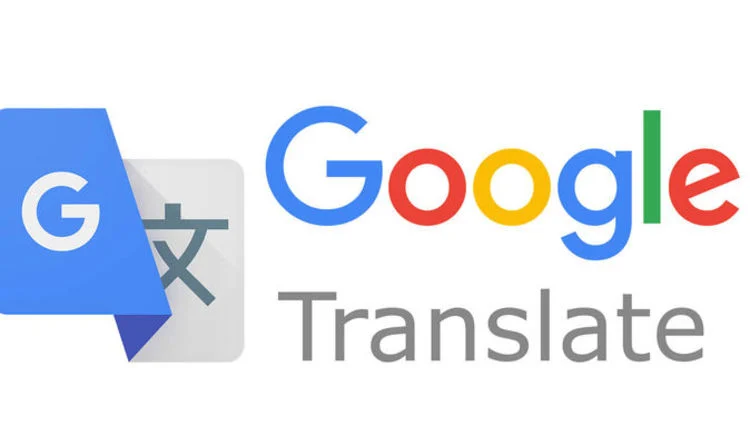A track from Lord Huron, the song of Hannah and Clay, became a Google Translate Memes. The song’s fitting lyrics and powerful instrumental made it an ideal subject for a Google Translate meme. Violinist Rhys Williams created a TikTok cover of the song, which was played by more than 16,000 people and became Google Translate memes. The song itself is quite fitting for Google Translate, but there are other themes that make the song even more compelling.
Google Translate memes
If you love to laugh, you’ll surely appreciate these hilarious Google Translate translations. Despite the many benefits of this translation service, it can sometimes produce needlessly complex content. That’s because the algorithm does not understand the context of a longer piece of text and will produce translations that make little or no sense. Take a look at the examples below to laugh along with these funny translations! You’ll surely agree that Google Translate isn’t the best solution for medical texts.
If you’re tired of hearing the sounds of your computer, why not try translating into Ned Flanders, the famous recurring character from The Simpsons. His evangelical spirituality and compassion make him a memorable character, but he also has a very funny vocabulary. Nate Smith of the YouTube channel Awkward Elevator envisioned that Google Translate could translate into Ned Flanders, who has his own language. Similarly, a Redditor came up with a scheme to turn Google Translate into a beatbox machine.
Machine translation service
Google has an automated machine translation service, but it is far from perfect. Its automated translation service was developed in 2006, using zillions of human translations to create a statistical model and translate words on a word-by-word basis. As a result, #googlefails memes flooded the internet. Luckily, Google’s machine translation service improved significantly. In addition to translating memes, it can also translate entire web pages.
Rekimoto began experimenting with the machine translation service and soon found that the quality had improved a great deal. In fact, he was so impressed by the results that he published a Japanese translation alongside the original text, inviting readers to guess which was by a human and which by a machine. As a result, his machine translation service was used by thousands of people on Twitter. In fact, at one point, Rekimoto couldn’t sleep due to the creepy grip it had on him.
Gifts
If you’re looking for the perfect gift, consider one of these cool products by Google. These gifts are designed by independent artists and printed on high-quality products in socially responsible ways. And each purchase puts money in the artist’s pocket. No matter what the recipient wants to buy, they’re sure to be happy! With over 100 languages and counting, there’s sure to be a gift to suit every taste. But where can you get one?
Merchandise
The concept behind Google Translate memes is based on the age-old practice of fucking around with the language translator. People often put in text and let Google translate it into English with an odd accent. They then use the translated version of the text to make humorous and sometimes offensive comments. These videos also often feature animals. If you’re interested in learning more about this trend, here are a few things you should know.
The first thing you’ll need to do is download an app that allows you to record videos. Many video-making apps are free. Once you’ve installed it, simply type the phrase you’d like to translate into Google Translate. Then, screen-record the Google Translate voice. Once you’re satisfied with the quality of the translation, find a clip that has gone viral on YouTube and create your own meme.
Top Reasons to Use Google Translate
Google Translate is a multilingual neural machine translation service that translates text, documents, and websites. It offers a web interface, mobile apps for iOS and Android, and an API for developers. Developers can use this API to build browser extensions and other software applications. To learn more about Google Translate, read on. Listed below are the top reasons to use Google Translate. But be aware that it doesn’t translate entire sentences or phrases.
Conversation mode lets you have a free-flowing back-and-forth conversation with a person who speaks a different language
Besides offering the ability to have a conversation with a person who speaks a foreign language, Google Translate also comes with a conversation mode, which lets you engage in a free-flowing back-and-forth exchange with the other party. This mode translates words and phrases on the fly. In addition, the Conversation mode also has handy popup instructions in the original language.
You can use Google Translate Conversation mode to have a back-and-forth conversation with whichever language the other party speaks. It has eight language options and you can choose which one you want to converse in. To use this mode, you’ll have to download the latest version of Google Translate and open the app.
With Google Translate Conversation mode, you can have a free-flowing back-forth conversation with a person who talks in a foreign language. Unlike the regular chat mode, this mode allows you to control the conversation. When you speak, you simply tap on the earbud to let the other person speak. This mode is perfect for cross-cultural conferences.
Google Translate does not translate whole sentences or phrases
The main drawback of Google Translate is that it does not translate entire sentences or phrases. Instead, it translates text into English first and then tries to understand what the writer is trying to convey. This leads to errors, because English is ambiguous, depending on context. As a result, if you want to translate the word you are saying into Russian, Google Translate will give you either Vous – you – ty OR By/vy. In an ideal world, it would give you an unambiguous translation – to – thou – ty.
Using Google Translate is a great way to learn a new language. There are many translation services available online, but Google’s service is one of the most popular. You can use Google Translate to learn a new language and improve your skills in your chosen language. It also allows you to share your translations with others via Bluetooth. It also works offline. However, it does not translate entire sentences or phrases, so you might want to consider the benefits of using Google Translate offline.
It translates only English words
Google Translate is one of the most popular translation tools, but it is limited by its nature. It cannot accurately translate other languages, and it only translates English words. It can’t read the nuances of human emotions and personal possessions, such as pride and jealousy. However, it is an extremely effective tool for basic communication between English-speaking people. For example, it can translate words like squash into Russian. The end-product reflects the intent of the speaker, and it even indicates the days of the week.
Users can also use Google Translate offline. They can download a language to translate offline. To use Google Translate offline, you need to have an internet connection or cellular data plan. It can be up to 25-30 megabytes in size, so check your data plan to make sure you don’t run out of data. In any case, you can find the offline translation option under the settings icon, so that you don’t lose your work.
It does not translate all types of documents
If you’ve been frustrated by the fact that Google Translate doesn’t translate all types of documents, you’re not alone. This annoying issue is caused by an extension on your browser called Wikipedia. Trying to disable it will fix your problem. Disabling extensions will erase your browser’s cache and cookies, but they’re essential to a smooth user experience. After removing all extensions, your preferences and history will disappear as well.
When translating short sentences, Google Translate can detect most commonly used words and phrases. When translating longer texts, however, this tool can struggle to process context and build accurate translations. Google did not hire linguists to compile grammars, since they felt that languages were constantly evolving. They also opted to build a lexicon that can identify common words and phrases, rather than relying solely on the words and phrases in the document.


